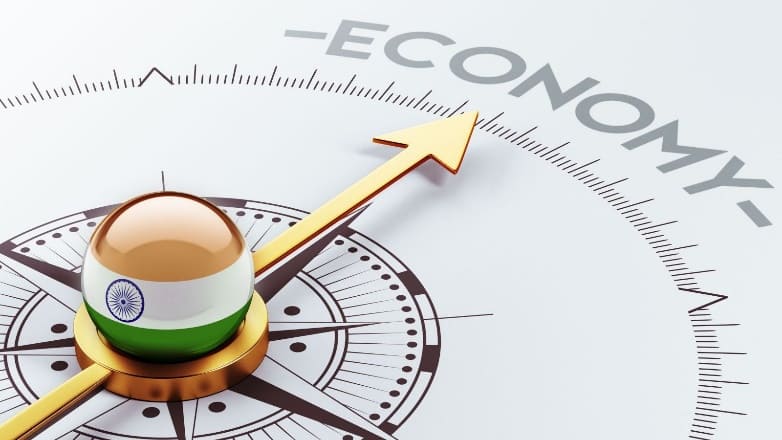Description

Disclaimer: Copyright infringement not intended.
Context
- Recently, the ‘State of the Economy’ update, the Reserve Bank of India noted that the balance of risks is increasingly tilted towards “a darkening global outlook”. Emerging market economies (EMEs) like India appear to be “more vulnerable”.
Projections
- Global food, energy and other commodity prices may have eased moderately over the past few months, but inflation continues to stay high and broad-based.
- Global inflation, according to the IMF, is forecast to decline from 8.8% in 2022 to 6.5% in 2023 to 4.1% by 2024 — still high by most yardsticks.
- The problem going into 2023 is the implications of stubbornly high inflation for the US Federal Reserve.
An extended phase of rate hikes in the US could have a three-pronged impact:
- The difference between interest rates in the US and countries such as India widens every time the US Fed raises policy rates, thus making India less attractive for the currency carry trade;
- Higher returns in US debt markets could trigger a churn in emerging market equities, tempering foreign investor enthusiasm;
- Currency markets would be potentially impacted by the outflow of funds to the us; sustained rate hikes by the fed would also mean a lower impetus to growth in the US, which could be bad news for global growth, especially when China is facing a new covid outbreak.
.jpg)
Prognosis: the positives
- The near-term growth outlook for the Indian economy is supported by domestic drivers. In November, equity markets touched new highs, buoyed by a rebound in portfolio flows to India.
- Headline consumer-level inflation moderated by nearly a percentage point to 5.9% in November, driven by a fall in vegetables prices.
- The twin balance sheet problem — of corporates having high levels of debt and banks saddled with bad loans on their books — looks to be getting solved.
- There has been significant improvement over the last five years, with the corporate debt-to-GDP at its lowest in nearly a decade and a half, and bank books have shed much of the legacy bad loans.
- Waning input cost pressures, surging corporate sales, and a turn-up in investments in fixed assets seem to be heralding the beginning of an upturn in the capex cycle, which could potentially contribute to a reboot of India’s growth momentum.
|
Capital expenditure (CapEx) is money that is spent to acquire, repair, update, or improve a fixed company asset, such as a building, business, or equipment. A CapEx is different from an everyday business, which falls under the operating expense category.
|
- The PLI scheme is offering an impetus to manufacturing, although the gains are skewed in favour of larger companies. Fresh investments are expected in renewables, electric vehicles, and battery tech.
- Bank credit has been growing in double digits for eight months now, reflecting an uptick in investments.
- The China-plus-one strategy being adopted by most multinational companies could be an opportunity, given that Beijing is vacating large amounts of space in low-skilled, unskilled labour-intensive manufacturing such as textiles, shoes, leather, and ceramics, and India has a chance to fill part of this vacuum.
- On a disaggregated basis, RBI data suggest that after a long gap of over two years, term-lending to non-corporates is seeing an uptick — a positive sign that seems to imply that smaller firms may be seeking funds beyond their immediate working capital needs.
- The Centre had recorded robust collections in both direct taxes and GST, reflecting sustained recovery of the corporate sector. States too have shown some decline in their consolidated deficits and net market borrowings.
- Agriculture has been a sustained driver for overall GDP growth, with the rabi outlook showing good prospects for wheat production with higher support prices, adequate reservoir levels, and climatic factors supporting higher acreage.

Prognosis: the negatives
- The external environment continues to be fraught with risks. The Ukrainewar drags on, threatening an energy-linked downturn in the European Union, India’s biggest export market. The US continues to grapple with cooling inflation pressure.
- 2023 will see higher protectionism worldwide, greater fervour for de-globalisation, and more economic balkanisation: a worrying prospect for countries such as India that are keen to tap exports as a driver for growth.
- Given that no country in the world has grown at over 7% for a decade without strong export growth, the protectionist mood around the world is a major dampener for emerging economies.
- In India, manufacturing continues to be wobbly. Factory output, as measured by the Index of Industrial Production (IIP), slumped to a 26-month low in the festive month of October. Core sector growth for October was just 0.1%, the lowest for 20 months. That has led to a rapid downward revision of India’s growth projections by analysts for the next fiscal.
- The anomaly of private consumption growing at over 9% even as manufacturing has shrunk by over 4% is worrying. Part of this can be explained by falling exports, the other plausible reasoning is that the consumption growth is being driven by the upper-income groups whose consumption is far more important than it is dependent upon domestic products. This ties in with the sharp increase in imports during the last six months.
- Capacity utilisation — the ratio of actual output to the potential output that can be produced under normal conditions — has shown a minor uptick but continues to hover around the 75% mark. Unless this goes up on a sustained basis, private investments are unlikely to pick up perceptibly.
- There is continuing distress among the Micro, Small and Medium Enterprises (MSME) firms, reflecting the deep cleavages in industrial recovery where the bigger companies are doing far better than the smaller firms. Evidence of this distress: one in every six loans disbursed under the Emergency Credit Line Guarantee Scheme launched as part of the Covid-19 relief package in May 2020 has turned bad in just 27 months, with the defaults mainly in the lower end of the loan bands (up to Rs 20 lakh). Given that MSMEs employ a sizable section of the labour force, their continuing financial stress points to the distress in the labour market, and a cascading impact on demand recovery.
- Capital expenditure of the states has remained weak. Investments by states typically tend to have a higher multiplier effect.
- Managing inflation expectations could be a challenge going forward, given that the RBI has been behind the curve on tackling prices, despite having hiked its benchmark lending rate by 225 basis points since May this year.
- India’s significant dependence on imported energy, at 4% of the country’s GDP, is a challenge that shows up on the balance of payments side. A current account deficitof well over 3% is projected for FY23.
- Rural wages contracted for the ninth consecutive month in September, pointing to continuing distress. This points to a continued labour oversupply in rural areas, and could have an impact on the labour supply dynamics and in depressing aggregate household consumption. The relatively higher inflation in rural areas is further muting spending in those regions.
https://indianexpress.com/article/explained/explained-economics/hope-challenges-and-a-lot-of-uncertainty-8345533/













